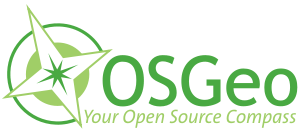T-13: Conquering complex application schemas (INSPIRE Data Themes, GeoSciML, ...) with deegree 3 web services
This hands-on tutorial covers the setup of the upcoming deegree 3 featureService and its configuration for complex application schemas. As working examples, (all!) INSPIRE Annex I Data Themes and GeoSciML 2.1 will be served from both GML files and a PostGIS database. We will explore requesting the features using the WFS protocol as well as performing transactions using WFS-T. Finally, real-time styling and rendering of the features will be demonstrated using the deegree mapService.
The deegree framework has a history of more than 5 years of supporting complex GML application schemas. Successful implementations include GeoSciML, INSPIRE Addresses and XPlanung (German standard for town, urban and regional planning). The new generation of deegree has been designed based on the past experiences and introduces state-of-the-art support for complex GML application schemas. This means that configuration has become very easy now -- setting up a WFS-T for INSPIRE can be as easy as dropping the unmodified INSPIRE application schemas into a configuration directory and starting up the server.
deegree 3 introduces major improvements regarding scalability, ease of configuration and support for complex application schemas. The deegree featureService implements OGC standards WFS 1.0.0 and 1.1.0 (2.0.0 planned), is fully transactional, XLink-capable and supports different flavors of GML (2, 3.0, 3.1 and 3.2). Queries may use complex filter expressions taking advantage of the full power of XPath 1.0. The advanced feature model of deegree 3 enables to use feature type hierarchies, nested features and even custom property types. As deegree 3 contains an ISO 19107-compliant geometry model, the WFS can natively handle complex geometries such as non-linear curves. XML-streaming technology enables the WFS to serve gigabyte-sized GML datasets with minimal memory footprint.
The tutorial requires background knowledge in GML application schemas. We will hand out images of a pre-configured virtual machine (VirtualBox) that contains the complete environment needed for the tutorial. Please make sure that you have a recent version of VirtualBox installed on your machine (>=3.1).
presenter
Markus Schneider (lat/lon GmbH )

